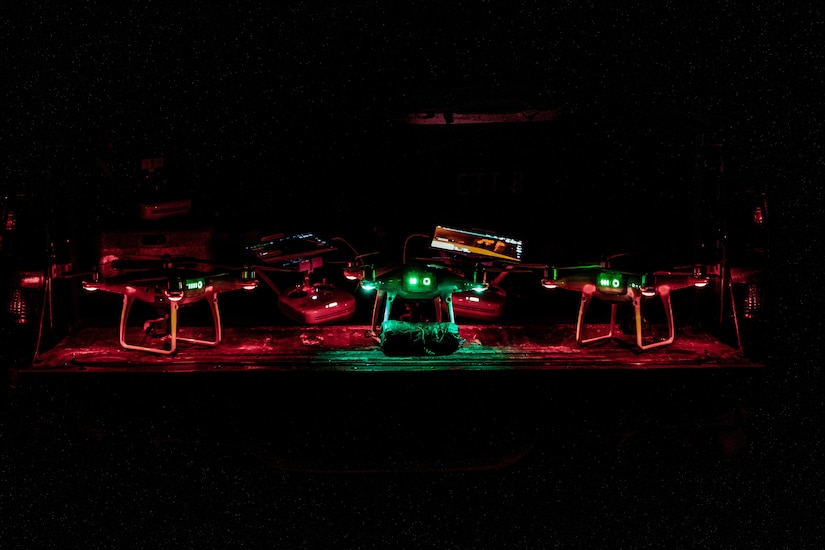Feb. 3, 2021 | , DOD News
Defeating a swarm of small unmanned aircraft systems may one day require faster decision making than what a single human being can provide, and may mean the use of artificial intelligence to make those decisions. Right now, though, rules of engagement still require a human in the loop.

"Right now we don't have the authority to have a human out of the loop," Col. Marc E. Pelini, the division chief for capabilities and requirements within the Joint Counter-Unmanned Aircraft Systems Office, said during a teleconference. "Based on the existing Department of Defense policy, you have to have a human within the decision cycle at some point to authorize the engagement."
But given the threat of UAS swarms, Pelini said he knows there is talk about developing artificial intelligence capabilities to enable "in-the-loop" or "out-of-the-loop" human decision-making.
"When you're starting to see swarming activities of hundreds or potentially thousands [of UAS] in the future, obviously you want your system to operate as fast [as possible] to provide those weaponeering solutions to the operator, or operate within a set of parameters," Pelini said. "But that's really kind of defined right now in the policy realm."
In January, the Defense Department published the Counter-Small Unmanned Aircraft Systems Strategy to provide a framework for addressing small UAS hazards and threats in the U.S., host nations and contingency locations.

One aspect of the department's strategy will be the development of a Joint Counter UAS Center of Excellence, which Army Maj. Gen. Sean A. Gainey, the director of the Joint Counter-Small Unmanned Aircraft Systems Office, said is being developed now under the guidance of the Fires Center of Excellence. A Joint Counter UAS academy is also expected to be developed to train service members and leaders on how to fight the threat posed by UAS.
"The intent of the academy is to ... not only provide the opportunity for training but to start training leaders on counter-UAS and have the basic understandings and ... go from basic to advanced understanding of the threat and then how to employ these capabilities," Gainey said.
The concept of the schoolhouse is likely to involve both resident and non-resident training opportunities for a variety of students, Pelini said.
"Your non-resident personnel would really kind of be the operators that are operating a specific piece of equipment ... that would be taught utilizing a joint common core," Pelini said.
With in-resident students, he said, the school would strive to accomplish two things.

"The first one is training experts — so kind of building those, for lack of a better term, master gunners on the Army side, that would help the commanders develop and evaluate and implement the counter-UAS training plan for the particular unit," Pelini said. "The other piece of the puzzle of the resident course is developing the joint architecture and joint systems experts ... understanding how systems interact with each other, getting more to the technical granularity, and understanding electronic warfare fratricide, radar fratricide, etc."
Pelini said in-resident students would be developed into subject matter experts to serve at battalion, brigade or higher commands to allow leadership to make optimal use of counter-UAS systems.








No comments:
Post a Comment